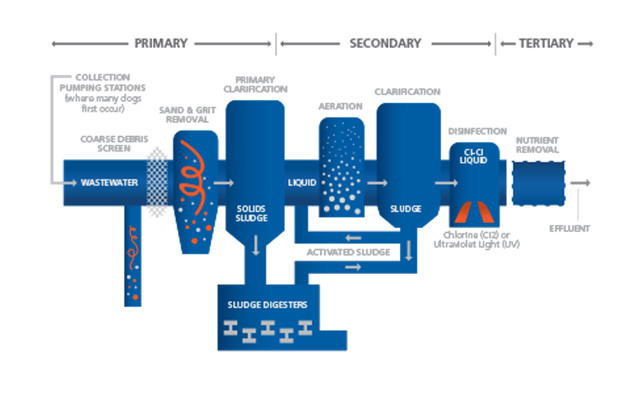The Facts About In Home Water Filter Systems Uncovered
Table of ContentsIn Home Water Filter Systems Things To Know Before You Get ThisIn Home Water Filter Systems - QuestionsThe Main Principles Of In Home Water Filter Systems In Home Water Filter Systems for Beginners
A phosphorous substance is included in help control rust of pipelines. This aids stop lead and copper that may exist in pipelines from seeping into the water. As the water leaves the plant, ammonia is included in transform the chlorine to chloramine, an anti-bacterial that maintains a recurring in the distribution system against bacterial contamination.All chemicals that are included are accredited food quality, risk-free for use in foods. Treated water is stored in deep underground storage tanks and additionally flows by gravity to pumping terminals and also into the circulation system. The circulation system contains 1,960 miles of water pipe varying in size from 4" to 60".
Removal of taste and odor compounds from the water.: Softens the water.: Filtering to get rid of tiny fragments and also disinfection to eliminate viruses and microorganisms, and also make sure an improper atmosphere for infection and also bacteria development throughout the distribution system.
8 Phases of the Wastewater Refine Phase One Bar Testing Elimination of big things from the influent to stop damages to the facility's pumps, shutoffs as well as various other tools. The procedure of treating and also recovering water from wastewater (any type of water that has been utilized in residences, such as flushing commodes, washing dishes, or showering, and also some water from commercial use as well as tornado sewage systems) begins with the assumption that after it is treated it will certainly be clean enough to reenter the setting.
Getting My In Home Water Filter Systems To Work
According to the EPA, The Clean Water Act (CWA) develops the basic structure for managing discharges of toxins right into the waters of the USA and also regulating quality criteria for surface waters. Under the CWA, EPA sets wastewater standards for industry. The EPA has likewise developed nationwide water quality criteria recommendations for contaminants in surface waters (in home water filter systems).

Associated White Documents Select Products Phase Two Testing Removal of grit by moving the influent over/through a grit chamber. Great grit that finds its means right into the influent requirements to be removed to stop the damages of pumps and devices downstream (or effect water flow). As well small to be screened out, this grit needs to be removed from the grit chamber.
Stage Four Oygenation Air is pumped right into the aeration tank/basin to motivate conversion of NH3 to NO3 and give oxygen for microorganisms to continue to propagate and expand. Once converted to NO3, the bacteria remove/strip oxygen particles from the nitrate molecules and the nitrogen (N) is emitted as N2 (nitrogen gas).
This begins in the hop over to here aeration container. The main function of the oygenation tank is to pump oxygen Source right into the tank to motivate the break down of any type of organic product (and the growth of the bacteria), in addition to make sure there is sufficient time for the organic product to be damaged down.
In Home Water Filter Systems - The Facts

Phase 5 Additional Clarifier Treated wastewater is pumped into a second clarifier to allow any kind of continuing to be organic debris to clear up out of cured water circulation. As the influent departures the oygenation process, it streams into a secondary clarifier where, like the primary clarifier, any type of very little solids (or fines) sink to the base of the container.
Part of this triggered sludge is gone back to the oygenation tank to raise the microbial concentration, assistance in proliferation, and also accelerate the breakdown of natural material. The extra is thrown out. The water that streams from the additional clarifier has actually considerably decreased organic material and ought to be coming close to anticipated effluent specs.
With the improved concentration of bacteria as part of the aeration phase, there is a requirement to check the outbound effluent for bacteria existence or absence and also to sanitize the water. This makes sure that greater than specified concentrations of microorganisms are not launched right into the environment. Chlorination is official source one of the most common as well as low-cost type of disinfection however ozone and also UV sanitation are also boosting in popularity.
All about In Home Water Filter Systems
Water is guided from the Head Tank to the Claricone clarifier. in home water filter systems. Water gets in the clarifier at the blending area situated in the bottom of the Claricone. Lime is included in the water in this zone where it responds with the calcium and the magnesium in the water to create speeds up.
After enough time, particles adhere to each other as well as expand into bigger particles, or, floc, which is vulnerable to settle in water. Explanation of water is achieved by the seperation of put on hold solids from water by gravity.
The clarified water relocations upwards gradually, eventually passing over the effluent weir to the cone outlet and also on the to filters for further therapy. The water plant includes a single stage lime softening procedure to eliminate solidity. Solidity is brought on by the existence of liquified bivalent and polyvalent steel ions, primarily calcium and magnesium.
This is included both in the clearwell and also the high solution discharge as water gets in the circulation system (in home water filter systems). Hydrofluosilicic acid provides the source of fluoride, which is useful in the avoidance of dental caries in children. A fluoride concentration of 1. 1-1. 2 mg/l is generally desirable in the plant faucet.